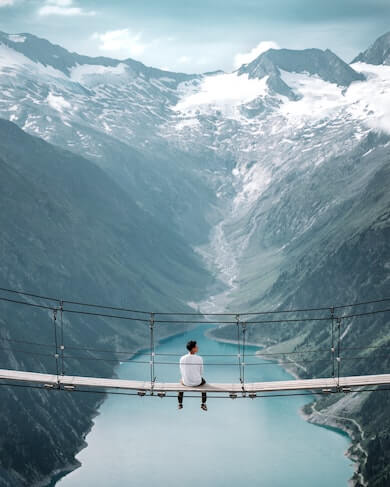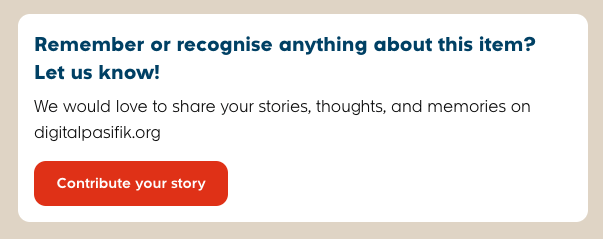Bridges between worlds

In November of 2020, we launched this site.
The key aim of this pilot is to make visible and accessible the digitised cultural heritage of the Pacific for the people in and of the Pacific.
We know that much of this cultural heritage is held beyond the Pacific in galleries, libraries, archives and museums (GLAM) around the world. Many of these GLAM sector institutions have digitised and host their collections online.
Our focus was on bringing these collections closer to those in the Pacific. The reality is that many Pacific people are not aware of the breadth and scale of these digitised collections, or of the wide range of institutions that hold them.
These institutions are scattered across the globe, and as a result many Pacific people are not able to physically reach these places to view these items, so our focus was on building a website that worked on the devices they own and the networks across the Pacific, to allow them access these items from where they are.
The metaphor we have used within our team to describe this focus is that the website serves as a bridge.
A bridge between worlds.
The worlds of the GLAM sector, and the worlds of the people of the Pacific
Bridges have form and they can of course be beautiful. But from the perspective of function, the point of a bridge is to move easily from one side to the other.
We think there is some beauty in the design of this site but the focus has equally been on the function. And that is to simply enable those who use our site to move between these multiple worlds.
The point is not the bridge itself.
In June of 2021, we launched a function that allows user of the site to pause on the bridge.
We call this function “contribute your story” and it lets anyone share a story, reflection, memory or their knowledge in relation to any record that we have on the site. This functionality is now below every item that we share on the site. Look for this on each page.

As these stories are shared, you can view them on a single page.
Our hope is that as users of the site share their stories, memories, and personal knowledge, this will provide a new perspective on the digitised records we share. An example can be seen on this record titled 'Group sitting on mats under trees', a photograph held at Te Papa Tongarewa.
The description held by the museum is:
Group sitting on mats under trees, circa 1992, Cook Islands, by John Daley. Gift of John Daley, 2012. © Te Papa. Te Papa (CT.063372).
This sample of the contribution from Mou Raea and family, provides this simple poignant recollection:
The Mama in the pink is my Aunty Tungane. I think the photo is taken just outside her house. Me and my family stayed at her home in Mauke in 1989, just after Christmas.
I took them to vai tango cave for a swim and showed them where i use to dive. I tested my daughter Trish if she could reach the bottom of the cave and to prove it to bring up a stone from the bottom. I was surprised because she brought up a stone, but i had never been able to dive down to the bottom haha.
Our hope is that stories and memories like this provide perspective on these records that is centered on the lived and often invisible experiences of Pacific people.
Our hope is that as this collection of stories from individuals grows, it will provide a uniquely human centred intentionality around these digitised records held by GLAM institutions.
Our hope is that on this site, on this bridge, these stories and this view provide a richer, shared experience for all who pass by.
We look forward to meeting you on the bridge.
We seek to honour your stories, your memories, your contributions.
We welcome you to share.
Vinaka. Tenkyu. Mahalo iā 'oe
And yes, this is the blogpost.
Embedded content: https://twitter.com/digitalpasifik/status/1405325943397249024?s=20Hero image by Alex Azabache on Unsplash
The information on this site has been gathered from our content partners.
The names, terms, and labels that we present on the site may contain images or voices of deceased persons and may also reflect the bias, norms, and perspective of the period of time in which they were created. We accept that these may not be appropriate today.
If you have any concerns or questions about an item, please contact us.